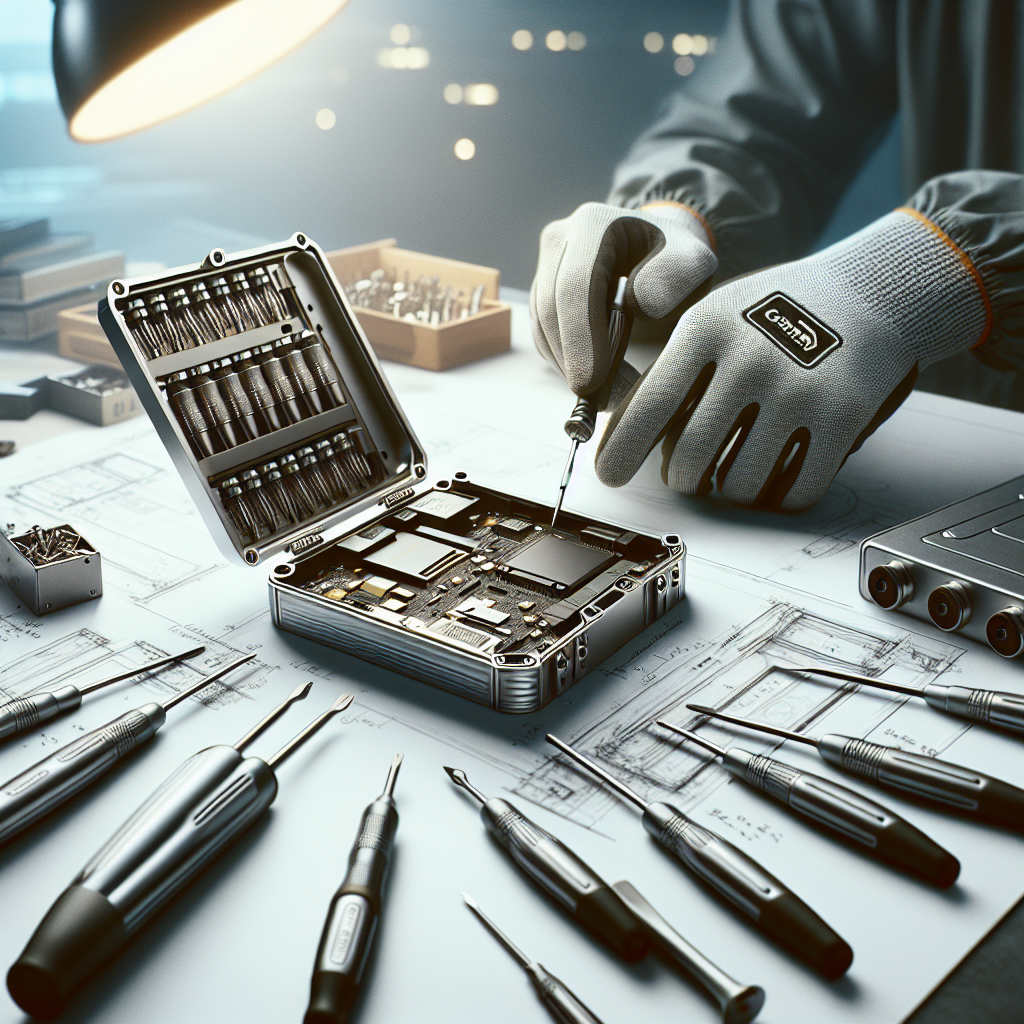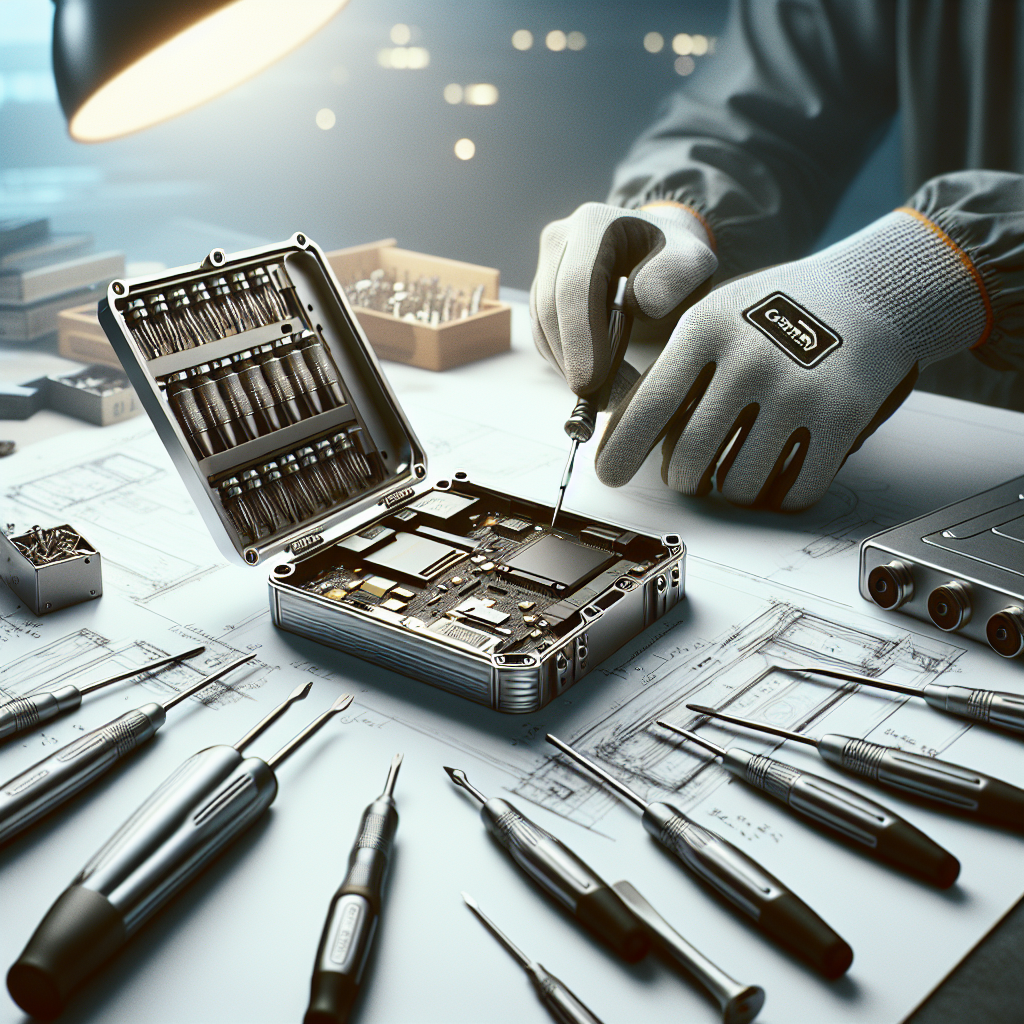So, you’ve just finished assembling your latest project and now you’re wondering what the next step is. Well, worry not! In this helpful guide, we will take you through a step-by-step process on how to close the case after assembly. Whether you’re a seasoned DIY enthusiast or a beginner, this article will provide you with all the essential information you need to safely and effectively wrap up your project and ensure its longevity. From securing the components to testing for any potential issues, we’ve got you covered. Let’s get started!
Preparing for Case Closure
Before closing the case after assembly, it is important to gather all the necessary tools and materials. Ensure that you have everything you need, such as screwdrivers, wrenches, and any specialized tools that may be required. Having all the tools nearby will save you time and make the process more efficient.
Next, it is essential to review the assembly instructions. Familiarize yourself with the sequence of steps involved in closing the case. This will help you understand the specific requirements of your assembly and ensure that you follow the correct procedure.
Lastly, clear your workspace. Remove any clutter or debris that may interfere with the case closure process. A clean workspace will not only create a more organized environment but also minimize the risk of losing small parts or misplacing important tools during the process.
Inspecting the Assembly
Before proceeding with case closure, it is crucial to inspect the assembly and ensure that everything is in order. Check for any loose parts or connections that may have become dislodged during the assembly process. Tighten any loose screws or fasteners to avoid potential issues later on.
Verify the alignment and symmetry of the assembly. Look for any deviations or misalignments that could affect the functionality or aesthetics of the finished product. Making adjustments at this stage will ensure a flawless final result.
Ensure that all screws and fasteners are tightened properly. A loose screw or fastener can lead to instability or even complete failure of the assembly. Take the time to ensure that everything is secure and tightened to the appropriate torque specifications.

Testing the Assembly
Now is the time to test the assembly and ensure that it functions as intended. Perform functionality tests to check if all the components work correctly. This may involve powering on the assembly, operating any moving parts, or testing electrical connections. Pay attention to any abnormalities or malfunctions that may require further attention.
Take the opportunity to thoroughly inspect the assembly for any defects, both visible and hidden. Look for any cosmetic flaws, such as scratches or dents, as well as any potential functional issues. Identifying these issues early on will allow you to address them before closing the case.
Verify that all features and components of the assembly are working properly. This includes checking buttons, switches, ports, and any other functional elements. By ensuring that everything is in working order, you can confidently proceed to the next steps of case closure.
Addressing Issues
During the inspection and testing phases, it is possible that you may identify issues or problems with the assembly. It is crucial to document and categorize these issues for further analysis. This will help you determine the appropriate solutions and ensure that they are addressed before finalizing the case closure.
By documenting the issues, you create a record of what needs to be addressed, which can be helpful for future reference. Categorizing the issues based on severity or significance will allow you to prioritize the solutions and allocate resources accordingly. This structured approach will ensure that no problem goes unnoticed or unresolved.
Identifying the appropriate solutions for the identified issues is a critical step in the case closure process. Refer to the assembly instructions or manuals for troubleshooting guidance. They often provide step-by-step instructions to resolve common problems. If the issue is more complex, consult technical support or contact the manufacturer for assistance.

Fixing Issues
Once you have identified the issues and determined the appropriate solutions, it’s time to fix them. Refer to the assembly instructions or manuals for guidance on troubleshooting and fixing specific problems. These resources often provide detailed instructions or diagrams to help you resolve issues efficiently.
Use the appropriate tools and techniques to fix the identified issues. This may involve tightening screws, replacing components, or adjusting settings. Ensure that you have the necessary tools and follow any safety precautions to prevent any further damage or accidents during the repair process.
After implementing the fixes, it is crucial to retest the assembly to ensure that the issues have indeed been resolved. Repeat the functionality tests performed earlier to verify that the components are now functioning as intended. By conducting these tests post-fix, you can have confidence in the successful resolution of any issues.
Cleaning and Final Touches
Before closing the case, it is important to clean both the case and the assembly thoroughly. Use appropriate cleaning agents and tools to remove any dirt, dust, or stains from the surfaces. Take extra care to remove any fingerprints or smudges to ensure a polished and professional appearance.
If desired, apply any final touches or enhancements to the assembly. This may involve adding protective coatings, applying decals or logos, or making any cosmetic modifications. These final touches can enhance the overall aesthetics of the assembly and provide a personalized touch.
Packaging the Assembly
Once the case and assembly are clean and finalized, it is time to package them for transportation or storage. Carefully wrap the assembly in protective materials to prevent any damage during transit. Bubble wrap or foam padding can provide excellent cushioning to protect fragile components.
Place the assembly in the designated case or packaging, ensuring a snug fit. Avoid any movement within the case by using additional packing material, such as foam inserts or packing peanuts, if necessary. A well-packaged assembly will withstand the stresses of transportation and minimize the risk of damage.
Sealing and Securing the Case
Before sealing the case, ensure that all latches, locks, or clips are closed and secured. Check that they are in proper working condition and will effectively hold the case closed. This step is crucial to prevent the case from accidentally opening during transit and potentially causing damage to the assembly.
Depending on the nature of the assembly or its contents, you may need to apply additional seals or tamper-proof measures. This ensures that the case remains securely closed and provides an added layer of protection against unauthorized access or tampering. Follow any specific instructions or regulations related to seals or tamper-proofing measures.
Labeling and Documentation
Attach any required labels or documentation to the case. This may include shipping labels, fragile stickers, or handling instructions. Ensure that these labels are clearly visible and securely attached to the case.
In addition to labels, include any necessary documentation with the case. This may include assembly instructions, manuals, or troubleshooting guides. Providing clear and easily accessible documentation will be invaluable to the end-user or recipient of the assembly.
Final Inspection and Sign-Off
Perform a final visual inspection of the assembly and the closed case to ensure that all steps have been completed correctly. Verify that there are no visible issues or loose parts. Take a moment to double-check that all necessary approvals or signatures have been obtained before closing the case completely.
Closing the case after assembly requires attention to detail and adherence to the specified process. By following this step-by-step guide, you can ensure that your assembly is closed successfully and ready for transportation, storage, or delivery to its intended destination.
